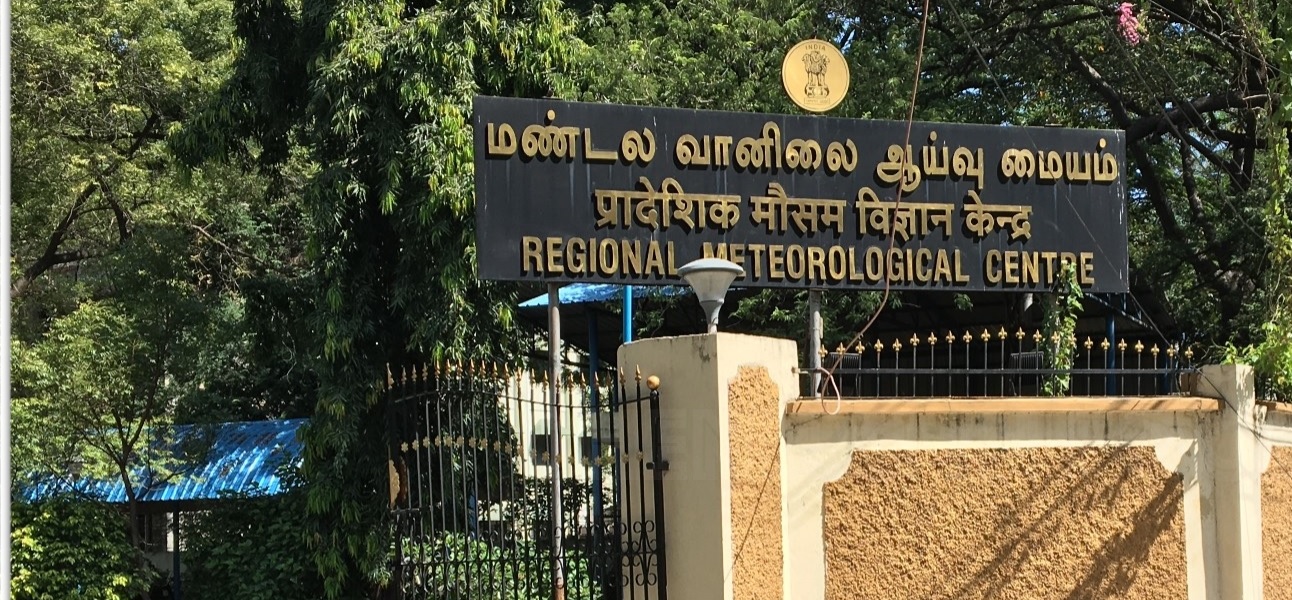While the IMD has issued a red alert in Andhra, 'warning cage-No-1' has been hoisted in five ports, including Nagapattinam port.

According to IMD, moderate thunderstorms and lightning with moderate rain are expected in several isolated areas of Tamil Nadu. (Wikimedia Commons)
The depression over the Bay of Bengal is likely to intensify into a cyclonic storm during the next 24 hours and will cross the Andhra Pradesh coast between Nellore and Machilipatnam on Monday, 4 December, stated the India Meteorological Department (IMD).
The IMD said moderate thunderstorms and lightning with moderate rain were expected in several isolated areas of Tamil Nadu.
The Regional Meteorological Centre in Chennai predicted moderate thunderstorms, lightning, and rainfall in 11 districts, including Nagapattinam, Mayiladuthurai, Thiruvarur, Ramanathapuram, Tiruppur, Dindigul, Tenkasi, Virudhunagar, Thoothukudi, Tirunelveli, Kanniyakumari, as well as Karaikal in Puducherry.
Chennai, Tiruvallur, Kancheepuram, and Chengalpattu districts have declared 4 December a holiday for educational institutions.
The IMD has also subsequently issued a red alert in Andhra Pradesh and Yanam.
🚨Red Alert!
Heads up, Coasters! Heavy to Very Heavy rain with Extremely heavy falls (above 204.4mm) is likely to hit Coastal #AndhraPradesh & #Yanam on 4th & 5th December. 🌩️ Brace yourselves for the heavy downpour! 🌦️ Stay safe everyone! pic.twitter.com/F9MtmIT7XL
— India Meteorological Department (@Indiametdept) December 2, 2023
The depression moved west-northwestwards at a speed of 18 kmph and intensified into a deep depression. At 8.30 am, it lay centred around 440 km east-southeast of Puducherry, the IMD stated.
The deep depression over Southwest Bay of Bengal at 0830 hr IST of today about 440 km ESE of Puducherry.Likely to move W-NW,intensify into a Cyclonic Storm over same region during next 24 hours.
— India Meteorological Department (@Indiametdept) December 2, 2023
The IMD said that the system is likely to move west-northwestwards and intensify into a cyclonic storm over southwest Bay of Bengal in the next 24 hours.
Thereafter, it would move northwestwards and reach the west-central Bay of Bengal off the south Andhra Pradesh coast and adjoining north Tamil Nadu coast by 4 December.
“Thereafter, it would move nearly northwards almost parallel and close to the south Andhra Pradesh coast and cross it between Nellore and Machilipatnam on 5 December as a cyclonic storm with a maximum sustained wind speed of 80-90 kmph, gusting to 100 kmph,” the IMD said.
Following the cyclone, “warning cage-No-1” has been hoisted in five ports, including Nagapattinam.
Due to the cyclone effect, the sea has receded by 100 metres at Velankanni Beach in Nagapattinam district. The IMD had warned that the sea would be rougher than usual in the coastal areas and advised the fisherfolk not to venture out for fishing.
In north coastal Tamil Nadu and Puducherry regions, the IMD has predicted light to moderate rainfall at most places, with isolated heavy rainfall very likely on 2 December.
Further, on 3 December, the rainfall intensity would increase with heavy to very heavy rainfall at few places and extremely heavy rainfall at isolated places.
On 4 December, the rainfall at most places is likely to be heavy, with heavy to very heavy rainfall at isolated places and decreasing thereafter.
Further, an extremely heavy rain warning has also been issued at one or two places over Tiruvallur district of Tamil Nadu on 4 December.
Anticipating that the cyclone would move along the north Tamil Nadu coast, and make landfall between Nellore and Machilipatnam on 4 December, the Greater Chennai Police have advised the people to take precautionary measures and not to go near the sea.
🌀There is a cyclone alert for Chennai and other parts of Tamil Nadu.
🌀@ChennaiRmc has predicted the formation of the cyclonic storm ‘Michaung’ in the southwest Bay of Bengal by December 3.
🌀This cyclone is anticipated to make landfall along the north Tamil Nadu coast,… pic.twitter.com/BKmCNhJhjw
— GREATER CHENNAI POLICE -GCP (@chennaipolice_) December 2, 2023
Further, the National Disaster Response Force (NDRF) has made 18 teams available to Tamil Nadu, Andhra Pradesh, Odisha, and Puducherry and 10 additional teams have been kept ready. Rescue and relief teams of the Coast Guard, Army, and Navy, along with ships and aircraft have been kept ready on standby.
Chief Minister MK Stalin instructed all concerned officials, including the local body authorities, to take precautionary measures, including evacuating people from the places likely to be hit by the cyclone.

Jul 26, 2024

Jul 26, 2024

Jul 26, 2024

Jul 26, 2024

Jul 25, 2024

Jul 25, 2024